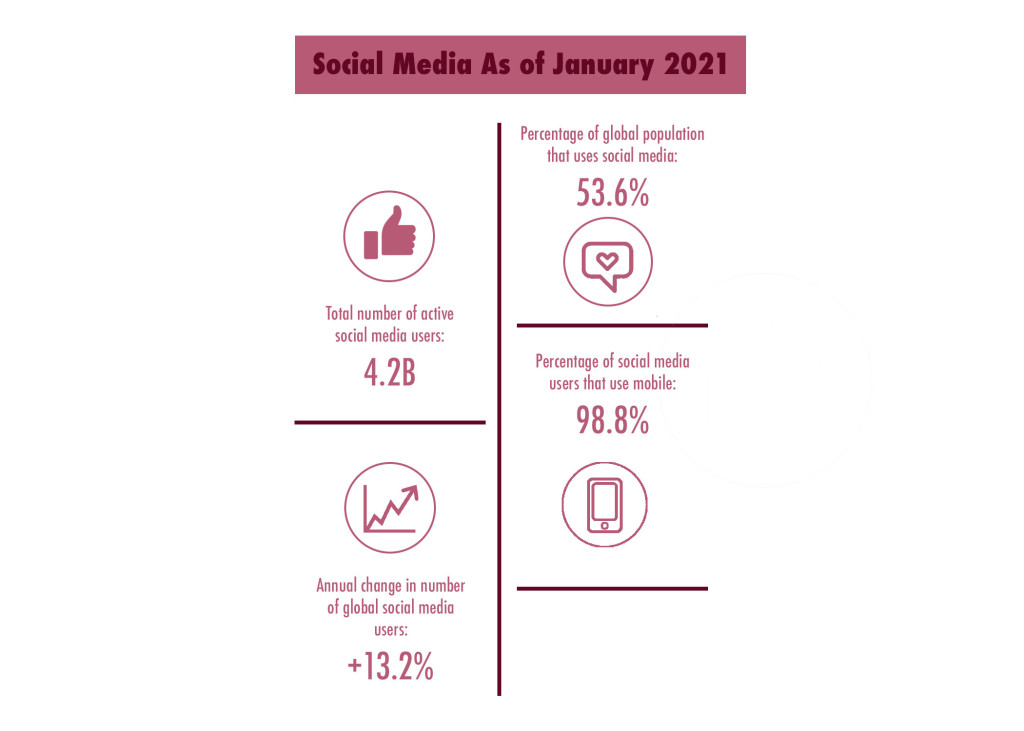Since the start of the pandemic, there has been a prevalent increase in screen time and social media usage. Students spend hours on Zoom classes doing homework, thoughtlessly checking social media, and watching Netflix. Since there is so little to do in the real world, many turn to screens, causing a major change in the lives of many students and adults.
Yasmin Navarro, a Spanish teacher at Berkeley High School (BHS) and recipient of a counseling degree, sees the impact that isolation, as well as constant screen usage, has on her students. “I think it's impacted students negatively. Particularly because, for some students, there's just lack of sleep if you're on social media late. Then there's the impact that it has on body image and the impact that it has on self-esteem,” she explained.
Many BHS students have noticed their screen time escalate significantly since the shelter in place orders began. “I think, since we’re all at home and there is nothing else to do, there has definitely been an increase,” said Kerala Malcom, a BHS sophomore in Academic Choice (AC).
For Talia Antell-Proulx, a BHS sophomore in Communications Arts and Sciences (CAS), her time on social media and screens has increased up to five hours a day due to COVID-19. “There's just not as much to do, so [we] choose our screens, because — especially closer to the beginning of the pandemic — that was the only way you could really interact with people,” she said.
Antell-Proulx sees screens as a coping mechanism for many students. “In a way, it's a form of escapism, so you don't really have to live in the real world — which is completely understandable right now, with so much going on,” she said. In her opinion, this increase could be a reason why the mental health of many students and adults has gotten worse during the pandemic. “I think the majority of people's mental health has decreased during this time, and I think social media definitely does have a large impact on that. There have been many studies showing that social media is not good for people's mental health — especially teenagers.”

This is a difficult change for teachers as well, who went from looking students in the eyes to seeing an array of black boxes on the screens each day. Some teachers decide to punish students for keeping their cameras off, but Navarro chooses a different path. “I always try and come at it from a space of empathy and understanding that [the students] hardly know me, and that ... there could be a myriad of things [going on].” When working with faceless students, she tries to support them as much as she can, and understands that there is a lot going on behind those screens that could explain why cameras are turned off. “Although I do know that some teachers will say something like, ‘Hey, would it be okay if you turn your camera on?’ I am not comfortable asking that question,” she said.
The combination of how hard it can be to focus during Zoom classes and the easily accessible entertainment provided by cell phones and social media can make it hard for students to stay motivated during classes. “I think [the constant accessibility of devices without any form of restriction] definitely makes people more distracted. I know that, for me personally, when I’m in class, I just go on my phone,” said Malcom. This, Navarro explained, is a neurological response to the isolation that many students experience in online classes. She said that phones and social media give additional dopamine to the brain and, since students are often alone and bored, they are always seeking “‘more,” and finding that through screen time.
The responsibility of keeping students mentally well falls partially on teachers, according to Navarro. “[Teachers should be] really making sure that students know … they are cared for and are loved; that they are seen as more than academic production machines and that [their] experiences are valid,” she explained. She wants everyone, adults and students alike, to have empathy for each other — especially during this time. “Just understand that this generation of students is dealing with a lot of loss,” Navarro said. “[A] loss of experiences, a loss of connections, the loss of markers of young adulthood.”
The question on the mind of many Berkeley community members is whether this increase in screen time will continue even as life begins to return to normal. Antell-Proulx believes that awareness of the problem is the first step. “Just be conscious of how much time you are spending on social media. I feel like it often turns into just mindless scrolling, which makes you lose track of time.” She encourages students to find activities such as clubs and sports to fill their time with rather than apps.
Navarro’s advice is to check in with yourself to see why you are opening TikTok or scrolling through Instagram. She wants students to consider the question, “Is it a tool for connection, self-development, and entertainment, or is it something you're consuming to fill your time?”





